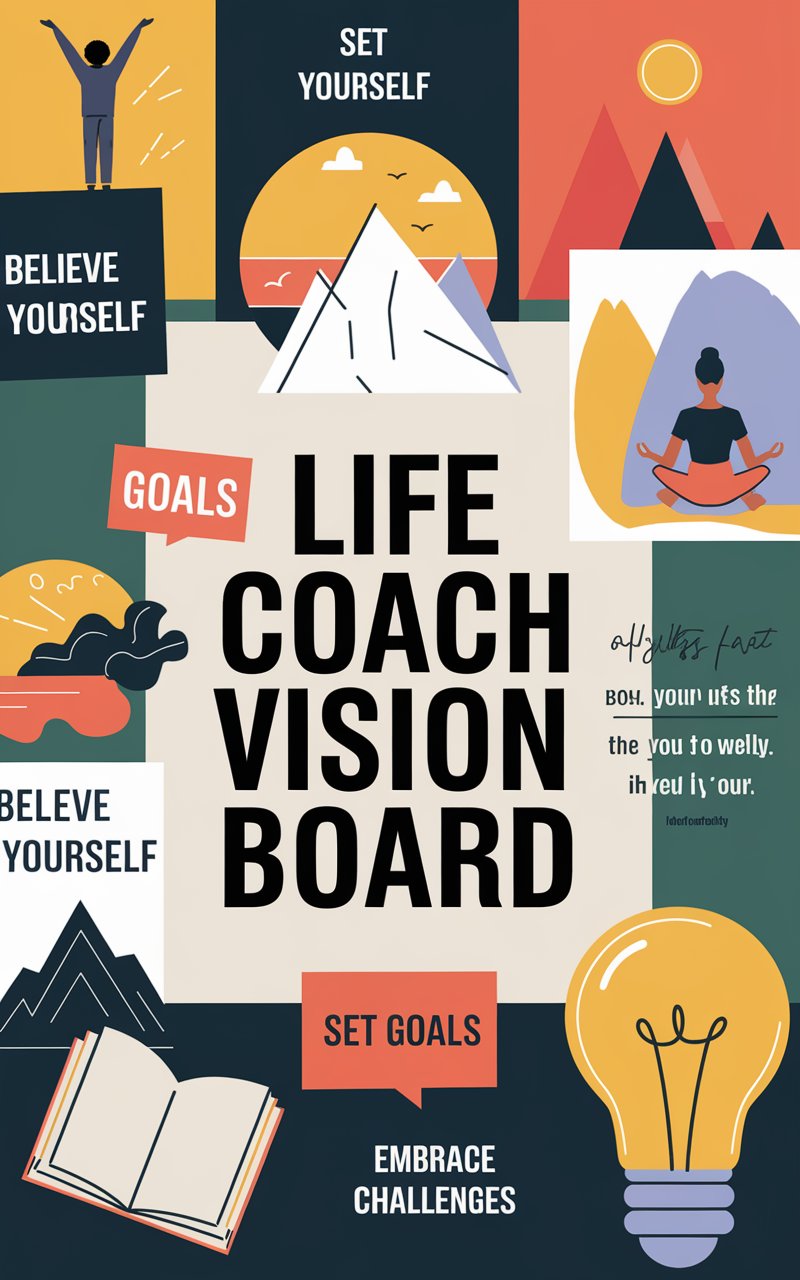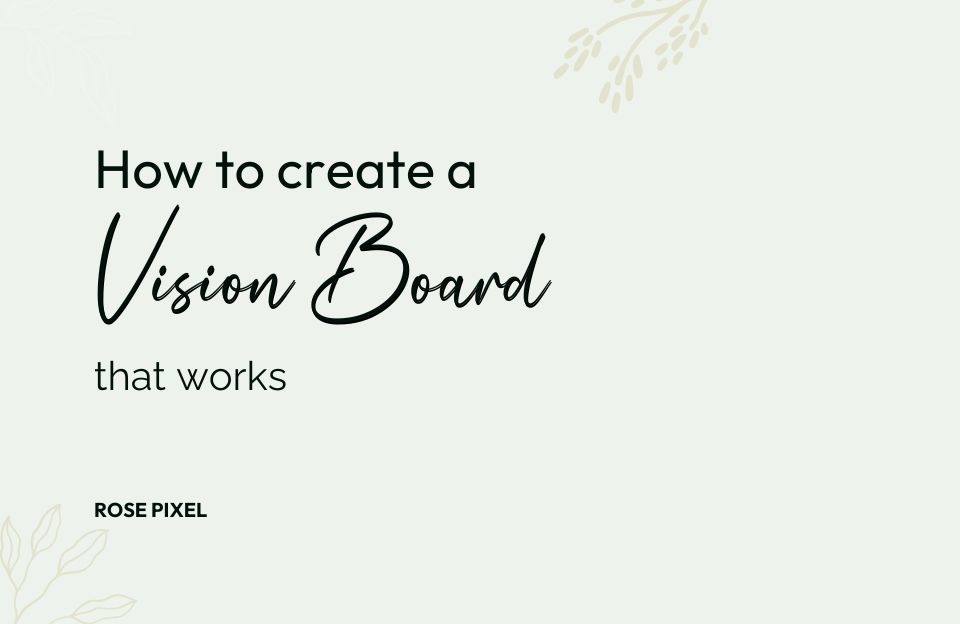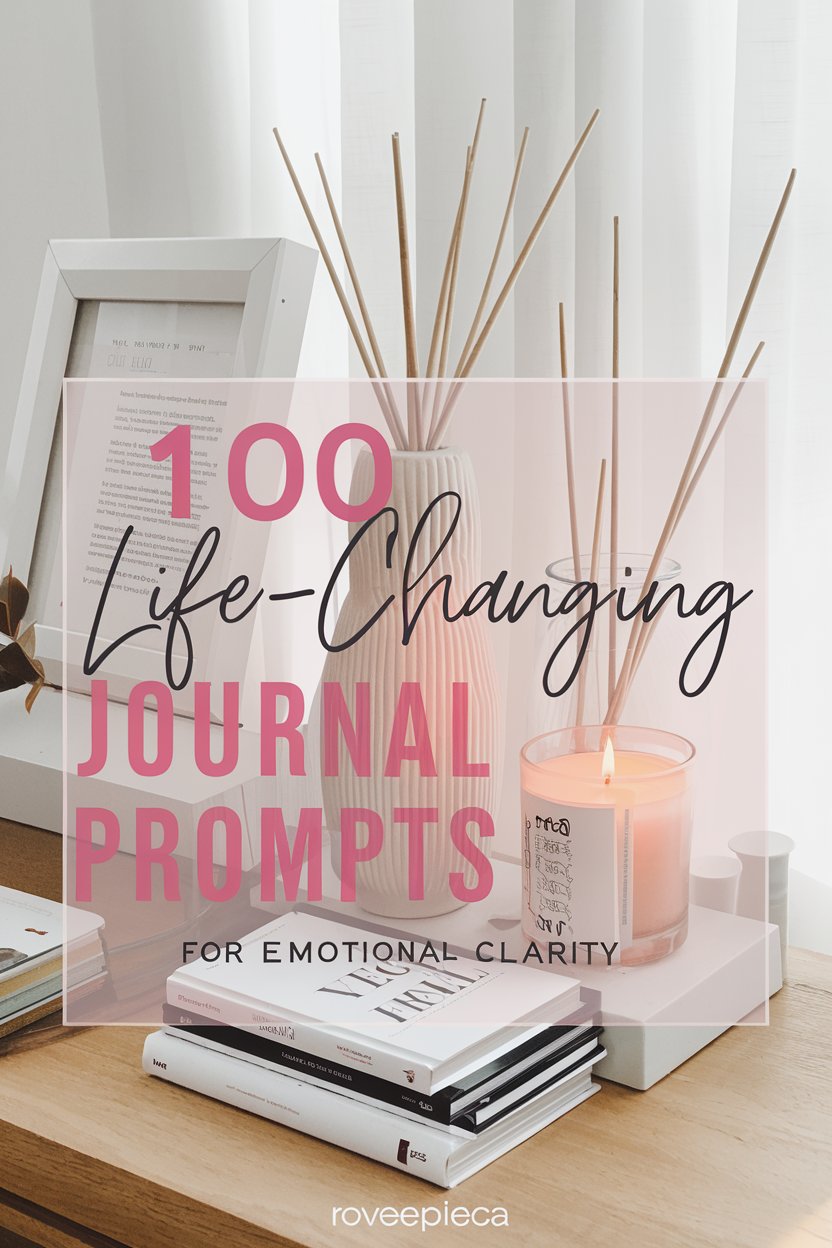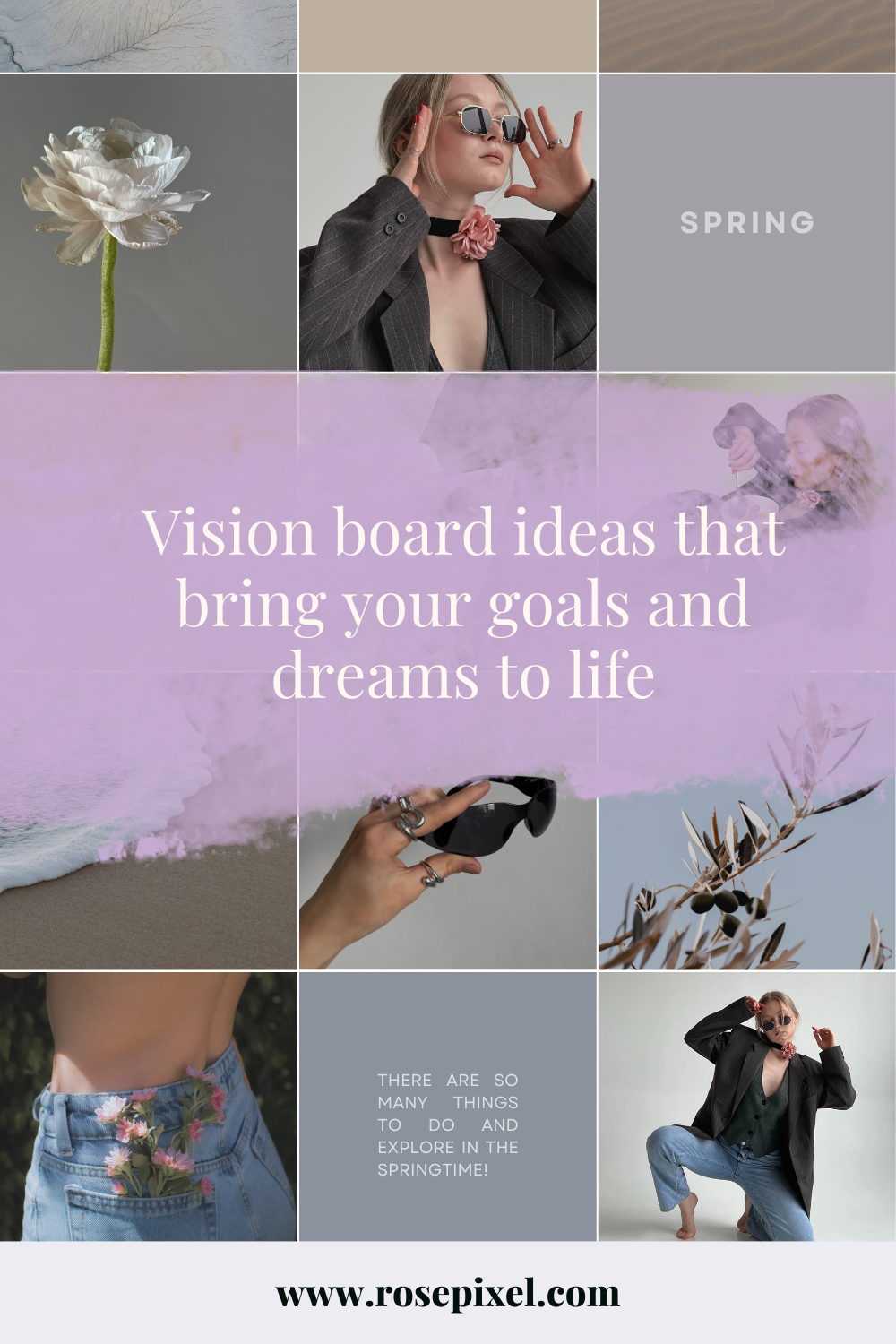A vision board can be a transformative tool for coaches and healers looking to align their aspirations with their day-to-day journey.
More than just a collection of images and words, a well-crafted vision board brings clarity to your goals, helps set intentions, and reinforces your path toward fulfillment in both life and business. It’s about creating a tangible representation of what you hope to achieve and how you aim to impact the world.
In this article, you will learn:
- How to choose meaningful images and affirmations for your vision board.
- The science behind visualization and why vision boards can work.
- Practical tips to make your vision board a regular part of your life.
Let’s explore how a vision board can become a meaningful ally in your journey.

Table of Contents
What is a Vision Board and Why It Matters
As a coach or healer, you likely understand the profound impact that clear, purposeful visualization can have on your clients. But have you considered how it can transform your own path, too? A vision board, at its heart, is a personalized visual guide, helping you connect with your highest intentions and stay attuned to the goals that fuel your mission.
Defining a Vision Board
In its simplest form, a vision board is a collection of images, words, and symbols that represent what you hope to create and achieve in your life or career.
These boards can be digital or physical, minimal or intricate, tailored to reflect the most important aspects of your personal or professional journey.
Unlike a to-do list or goal sheet, a vision board invites you to engage with your aspirations in a more dynamic, visually compelling way.
Types of Vision Boards
There’s no one-size-fits-all approach to creating a vision board. Some people prefer physical boards made from magazine clippings and personal photos, while others opt for digital versions using tools like Canva or Pinterest.
You might choose a board dedicated to your overall life vision, or even create themed boards that focus on specific areas such as your coaching business, wellness, relationships, or financial goals.
This flexibility makes it possible to design a vision board that resonates with your unique personality, goals, and values.
The Benefits of a Vision Board
For those in the coaching and healing professions, vision boards can serve as an anchor, a place to return to in moments of doubt or overwhelm. By aligning your day-to-day actions with your larger vision, a vision board brings clarity and focus to your journey. It serves as a powerful visual reminder of why you’re doing the work you do, and what you’re striving to achieve.
More than that, a vision board encourages you to stay connected to your goals in a way that’s inspiring, not daunting—a space where your dreams and plans converge in one empowering place.

The Science of Visualization
For coaches and healers, visualization isn’t just a technique you guide clients through—it’s a practice that can fuel your own growth and success. Visualization, when combined with a clear vision, can reframe your mindset, increase motivation, and even create new neural pathways that reinforce positive habits.
How Visualization Works
When you visualize a goal, your brain activates many of the same regions it would if you were physically performing the action. This mental rehearsal creates “priming,” where your brain becomes more responsive to real-world situations that align with your goals.
For instance, if you visualize yourself successfully leading a workshop or growing your practice, your brain “prepares” for this reality by forming connections that support confidence, preparation, and skill development.
Research-Backed Benefits
Visualization isn’t just a feel-good exercise; it’s backed by science. Studies in neuroscience have shown that mental imagery can improve performance, enhance motivation, and reduce anxiety. For example, athletes have used visualization for decades to improve their skills and manage stress.
In one study, people who visualized specific muscle movements experienced increased muscle strength, even without physical training. For coaches and healers, this means that vision boards and visualization techniques can actually help “train” your mind toward achieving your goals with more ease and focus.
Connecting with the Law of Attraction
While the concept of the Law of Attraction has gained popularity, it’s important to note that vision boards work best when combined with practical actions. The Law of Attraction suggests that focusing on positive thoughts can bring those experiences into your life.
However, as professionals helping others transform, you understand that true change comes from coupling intention with action. Using a vision board alongside actionable steps allows you to stay grounded, focused, and motivated in ways that are more likely to bring sustainable success and growth.
By embracing visualization, you’re not only envisioning what you want to achieve but actively training your brain to recognize opportunities, make confident choices, and stay aligned with the impact you wish to have on your clients and the world.

How to Create a Vision Board That Works
Creating a vision board is a highly personal process, and it can be as simple or as elaborate as you like. What matters most is that each element you choose resonates with your goals and values. Here, we’ll walk through the essential steps to make your vision board an empowering tool for your personal and professional journey.
Step-by-Step Guide to Building Your Vision Board
-
Reflect on Your Goals
Begin with clarity by reflecting on what you genuinely want to achieve in different areas of your life. This might include expanding your coaching practice, improving personal well-being, or even building a community of like-minded people. Writing down these goals is a helpful first step; consider using a journal or digital note to capture these insights. -
Choose the Right Materials
You can create a physical vision board using magazines, printed images, or personal photos, or you might prefer a digital version using tools like Canva or Pinterest (include links to Canva and Pinterest here). Physical boards provide a tactile experience, while digital ones allow flexibility and can be easily updated. Select whichever feels most accessible and inspiring to you. -
Select Meaningful Images and Words
This is where the real heart of your vision board comes in. Look for images, phrases, and quotes that evoke positive emotions and align with your values.For example, if you’re looking to grow your business, you might include imagery of successful workshops, testimonials, or even symbols of abundance. For personal well-being, consider images that represent peace, health, or balance. Each choice should resonate deeply with you—not just as something you want, but as a representation of who you are becoming.
-
Add Intention to Each Image
Don’t just place an image on your board; take a moment to set an intention with it. Visualize yourself living that reality—running a thriving coaching practice, for example, or feeling at peace in your personal life. This step is powerful because it reinforces the meaning behind each visual cue, transforming your vision board from a passive display into an active reminder of your purpose. -
Position Your Vision Board for Daily Engagement
To make your vision board an integral part of your journey, position it where you can engage with it daily. This might mean placing it in your office, near your morning coffee spot, or as a background on your computer. The more you see it, the more it becomes woven into your subconscious and daily actions, reminding you of your commitment to your vision.
Examples of Effective Vision Boards
- Digital Vision Board for Coaches: If you’re a coach focusing on business growth, you could create a digital vision board with elements like a growing audience graph, images of engaged clients, and affirmations for successful workshops or launches. Platforms like Canva or Trello (link to Trello) can be great for organizing these elements visually.
- Personal Balance Board for Healers: For healers who want to maintain balance, a physical board might include images representing mindfulness, health, and family, along with reminders to prioritize self-care and boundaries.
Each vision board is a unique reflection of its creator, so make it as distinctive as your own journey.
Tips for Using Your Vision Board Daily
Creating a vision board is just the beginning. The real power comes from making it a regular part of your life, one that inspires and motivates you daily. Here are some simple yet effective ways to keep your vision board working for you every day.
Make It a Daily Ritual
Set aside a few minutes each morning or evening to connect with your vision board. Use this time to pause, reflect, and visualize each element as if it’s already a reality. Imagine yourself embodying the qualities you see—whether it’s confidence, calm, or abundance. For coaches and healers, this ritual becomes a grounding practice that keeps you aligned with your purpose and helps you show up fully for your clients.
Practice Visualization Exercises
Take visualization a step further by pairing it with short, intentional exercises. For example, spend five minutes visualizing a specific goal on your board, like leading a successful client workshop. Picture every detail—the energy of the room, the positive interactions, and the fulfillment that comes from helping others. This technique, sometimes referred to as “mental rehearsal,” can be incredibly powerful for reinforcing your intentions.
To explore more on visualization exercises, consider resources like Psychology Today’s guide on visualization or books like Creative Visualization by Shakti Gawain (link to resources as needed).
Update and Reflect on Your Vision Board
Your goals and dreams are likely to evolve, and your vision board should evolve with them. Make it a monthly or quarterly ritual to review your board, noting any goals you’ve achieved or areas where your focus has shifted. Refreshing the board not only keeps it relevant but also reminds you of how far you’ve come. This reflection helps you celebrate wins, adjust course if necessary, and stay inspired by your progress.
Consider Using Affirmations
Affirmations—positive statements that reinforce your goals—can be an excellent addition to your vision board. For instance, if you’re aiming to grow your healing practice, you might include an affirmation like, “I am creating a positive impact in the lives of my clients.” Each time you read this, it reinforces your commitment to your purpose. Repeating affirmations linked to the images on your vision board can boost motivation and reduce self-doubt, helping you stay focused on your journey.
Here’s the concluding section, bringing together the key takeaways and suggesting a next step for readers on their vision board journey.
A Vision Board is a Powerful Tool
A vision board is more than a collection of images; it’s a powerful tool that helps you connect with your goals, stay motivated, and make progress toward your highest aspirations. By crafting a board that truly resonates with your intentions, you’re creating a daily reminder of the impact you want to have as a coach or healer.
To recap, here are the three main takeaways for creating a vision board that supports your journey:
- Choose images and words that genuinely align with your values and goals.
- Engage with your board regularly, visualizing each element as if it’s already a reality.
- Revisit and adapt your board periodically to reflect your growth and evolving aspirations.




